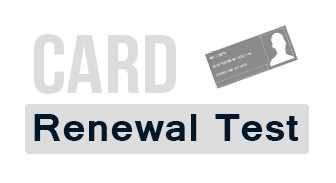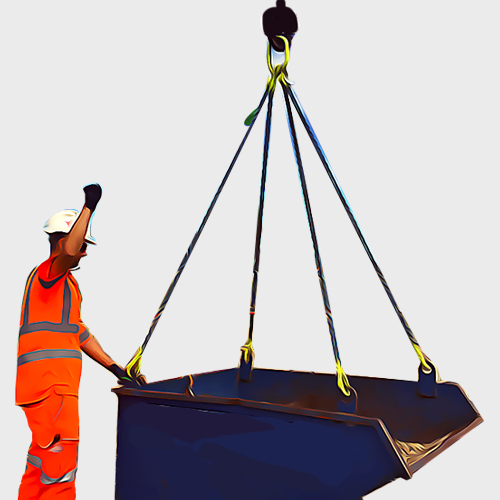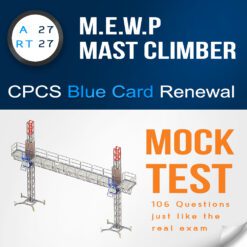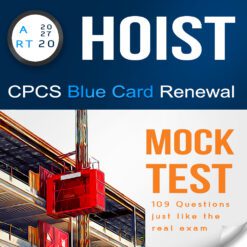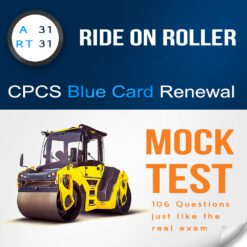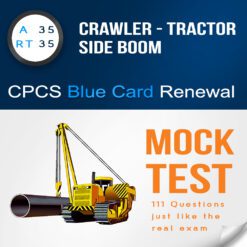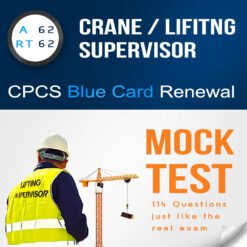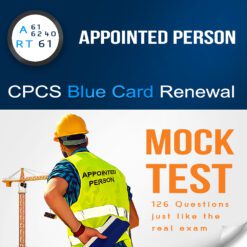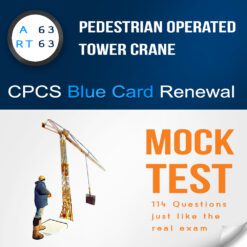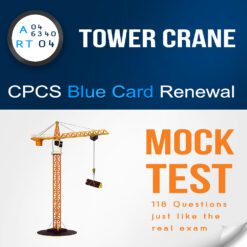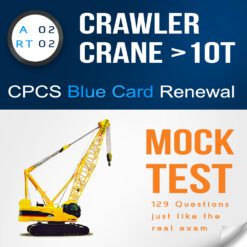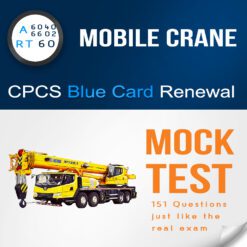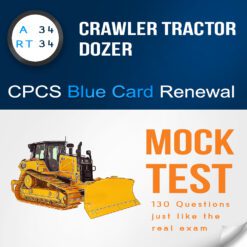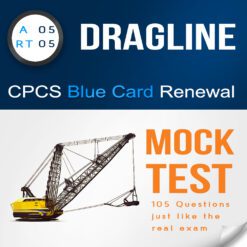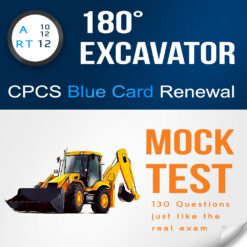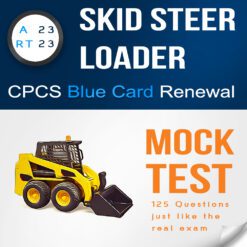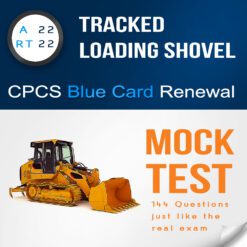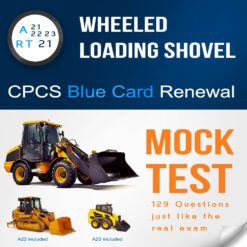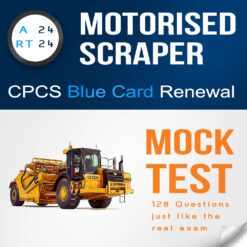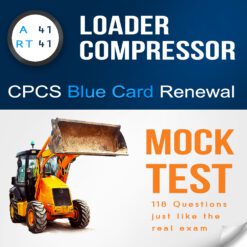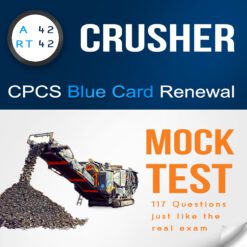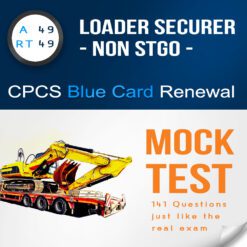1. What are examples of different types of lifting accessories?
A) Hammers and wrenches
B) Chain slings, wire rope slings, and fibre-type webbing slings
C) Welding equipment and soldering irons
D) Screws and bolts
Correct Answer: B) Chain slings, wire rope slings, and fibre-type webbing slings
2. Why is the use of a proper shortening clutch necessary when dealing with multilegged chain slings?
A) To increase the load’s weight distribution
B) To minimize the overall length of the chain sling
C) To manage and adjust sling lengths for an uneven load
D) To maintain an even balance among all legs of the chain sling
Correct Answer: C) To manage and adjust sling lengths for an uneven load
3. What constitutes the total weight during a lifting operation, according to the guidance?
A) Only the weight of the load, excluding any accessories
B) The combined weight of the load, accessories, and packaging
C) Solely the weight of the lifting accessory
D) The load’s weight multiplied by the number of personnel involved
Correct Answer: B) The combined weight of the load, accessories, and packaging
4. What specific precaution should the slinger/signaller ensure when using a shortening clutch for most types of chain slings?
A) That the clutch is positioned at the top of the loaded end
B) That the clutch is facing upward to ease handling
C) That the clutch is located centrally within the chain sling
D) That the loaded end of the chain exits at the bottom of the clutch
Correct Answer: D) That the loaded end of the chain exits at the bottom of the clutch
5. Why is it necessary to segregate lifting areas from areas with public access?
A) To demonstrate the power of the lifting equipment to bystanders
B) To avoid potential accidents from public interference
C) To encourage public interaction with the lifting operation
D) To increase efficiency in the lifting process
Correct Answer: B) To avoid potential accidents from public interference
6. Who has the sole authority to amend the lift plan if alterations are necessary before or during the lifting operation?
A) Any qualified team member on-site
B) The slinger/signaller in charge of the operation
C) The crane operator operating the equipment
D) Only the lift planner/appointed person
Correct Answer: D) Only the lift planner/appointed person
7. Why does the rated lifting capacity of a crane primarily apply?
A) Only when the load is freely suspended
B) Irrespective of the load’s condition or attachment
C) Solely during specific hours of the day
D) Whenever the load is partly secured
Correct Answer: A) Only when the load is freely suspended
8. What happens to the safe working load of a pair of slings when the included angle exceeds 90 degrees?
A) The safe working load is considerably reduced
B) The safe working load is considerably increased
C) The safe working load remains unaffected
D) The safe working load is doubled
Correct Answer: A) The safe working load is considerably reduced
9. What potential issue may arise even if the wind speeds are below the set limit during a lifting operation involving loads with a large surface area?
A) Crane overload due to wind resistance
B) Unpredictable crane movements outside the radius
C) The occurrence of gusts of wind exceeding the set limit
D) Movement or swinging of the load causing the crane to go out of radius
Correct Answer: D) Movement or swinging of the load causing the crane to go out of radius
10. What risk arises when the accessory was previously operating near its safe working load and the leg angles exceed 90 degrees?
A) Overload on the lifting equipment
B) Improved load distribution across the accessory
C) Enhanced stability in the lifting operation
D) Reduced chances of equipment strain
Correct Answer: A) Overload on the lifting equipment
11. Why should slewing with a load be undertaken cautiously?
A) To ensure faster completion of the lift
B) To decrease the likelihood of load overshooting the landing place
C) To test the crane’s maximum slewing speed
D) To allow for heavier loads to be carried safely
Correct Answer: B) To decrease the likelihood of load overshooting the landing place
12. What knowledge should slinger/signallers possess concerning lifting accessories and their prescribed limits?
A) Understanding the maximum lifting speed for each accessory
B) Knowing the structural integrity of each accessory
C) Knowing the safe working load and the consequences of exceeding those limits
D) Calculating the center of gravity for different lifting accessories
Correct Answer: C) Knowing the safe working load and the consequences of exceeding those limits
13. Why is it part of the slinger/signaller’s role to inspect the load before releasing any load-restraining or securing gear?
A) To speed up the unloading process
B) To ensure the load is heavier than anticipated
C) To prevent unexpected movement or shifting of the load
D) To intentionally displace the load for easier handling
Correct Answer: C) To prevent unexpected movement or shifting of the load
14. By how much must the SWL of a sling be reduced when a choke hitch is being used?
A) Reduced by up to 20%
B) Reduced by 5%
C) It remains the same
D) Doubled
Correct Answer: A) Reduced by up to 20%
15. Why must the hook of the crane be positioned above the load’s center of gravity?
A) To reduce the load on the crane
B) To ease the lifting process
C) To prevent crane malfunctions
D) To ensure stability and prevent tipping
Correct Answer: D) To ensure stability and prevent tipping
CPCS A40 mock exam, A40 Slinger Signaller practice questions, Slinger Signaller theory test, CPCS RT40 mock test, RT40 practice questions, CPCS renewal test, blue card renewal practice, A40 mock test free, RT40 mock exam pdf, CPCS mock exam pdf, Slinger Signaller exam questions, Signaller theory questions, CPCS practice exam free, Citb mock test free, NOCN practice questions, CPCS sample questions, Slinger practice test, Signaller mock exam, RT40 sample test, A40 revision test

